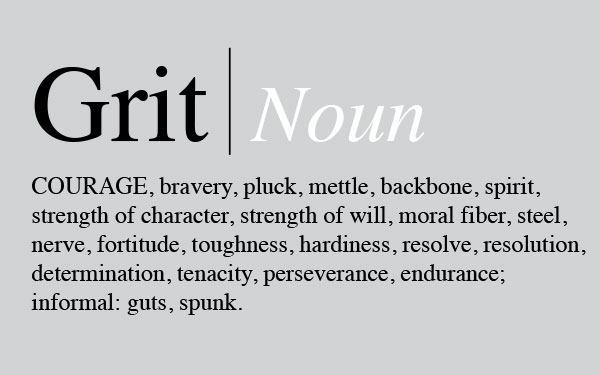Intense Late Adolescent Psychological Re-Orientation Takes Many Forms

Why Is Boot Camp So Intense?
You have to train 18-year-olds to run to the sound of gunfire and perform under fire and the threat of death.
This act defies all logic, goes against all human instinct, and takes one of the most intensive acts of psychological reprogramming to overcome.
… There will always be the need for young men and women who are willing and able to run to the sound of imminent danger and many, to their death. Nations need this. You need this. It is a horrible thing, but the sanctity and security of every nation on Earth requires young men and women capable of doing this.
To do this, however, we need a form of psychological training that is able to forge individuals who can do this. That is why boot camp has evolved to become such a potent tool in today’s military machine.
__ Jon Davis, Marine Sergeant
Sergeant Davis does not mince words. In order to create marines out of raw recruits, an intense form of psychological re-orientation (or reprogramming) is required. Why? Because most raw recruits arrive at basic training fresh from an extended childhood. They have been pampered, sheltered, told they were special, provided with their every need — and often their every whim — just like a child. But real adult life is not childhood in a productive society. “Children” need to undergo some form of transformation before they are able to understand the distinction.
Not Every Form of Rite of Passage Need to be So Intense as US Marine Boot Camp
Throughout the church’s history, over one million missionaries have been sent on missions.[2][3] __ Wikipedia
The Salt Lake City, Utah based Latter Day Saints (Mormon) church has its own rite of passage for youth. We have all seen “Mormon Missionaries” walking and biking about. But what is the inside story for this religion based rite of passage? First, its’ dangerous.
Missionaries intentionally go after people in desperate situations. On my mission, we’d go into the worst parts of town to talk to the meth addicts and crackheads. Sure, they need help and attention more than anybody, but most of my colleagues were distinctly upper middle class white Mormons. Short of bursting out into an impromptu rap about how “drugs are for thugs,” there’s no way they could have been more conspicuous.
Training for “missionhood” is regimented, with long hours.
The whole thing is divided up like the underclass in some dystopian sci-fi world — we’re separated into wards, zones, and then six-man districts. You don’t associate with anyone outside your zone while you’re training. Every missionary has to be in sight of their companion at all times. For two solid years, our only alone time was in the bathroom. Do not, under any circumstances, picture the state of that bathroom.
… It’s pretty much like The Hunger Games…
Mormon Missionaries are given this intense programming so that they can get results for the church. They must be committed before they begin — because they pay for their training in hard cash and precious time. And on top of all that commitment ant training fees, the church expects a larger return.
Among other things, you’re not allowed to use a computer if a companion can’t see the screen, and you’re never supposed to be out of their earshot. The logic is that you can’t break the rules if you’re never, ever alone…
… We log everyone who shows interest — or even talks with us — and follow up on a regular basis. That’s because the whole “converting souls” thing is very much a competition. The higher ups in the church are obsessed with numbers. They want people baptized, inactive members brought back to the fold, etc. __ Time as Mormon Missionary
The fatality rates among Mormon Missionaries are lower than among combat marines, during wartime. But Mormon Missionaries are always at war against the dark forces of human nature, so there is never any letup.
Much Beyond Religious Conversions Often Emerges From the Mormon Missionary Experience
Being thrown into strange and dangerous settings and experiences forces the young Mormon to think on his feet, to sink or swim. Many missionaries develop robust resilience in the field, which they bring back with them to their subsequent lives.
The notion of the Mormon mission as a crucible is a common one, and the benefits gained from going through it have been used to help explain the prominence of LDS Church members in business and civic life.[50][51][52][53] Mission experience has also helped prepare RMs for later engaging and prospering in non-Mormon environments.[54] __ Wikipedia
Other Common and Usually Constructive Rites of Passage for Late Adolescents
Any intense extended experience — either solo or group — can serve as a rite of passage from childhood into adulthood. Immersing oneself into particular occupations can serve the “passage” purpose quite well. Examples may include training as EMT / Paramedic, Search and Rescue, Police or Fire Department training, Commercial Deep Sea Diving, Wild Fire Jumpers …
Not all of the 20 Deadliest Jobs in America would qualify as rites of passage, but one can get a sense of which jobs may be more intense — and transforming — than others.

A Dangerous Child Will Have Mastered Multiple Dangerous Skills Before Age 18
Dangerous Child training is different from the run of the mill “rite of passage” discussed above. Dangerous Child training begins before birth and continues throughout the lifetime. Multiple rites of passage succeed each other, as mastery is applied to mastery, and complementary skills are added to complementary skills.
The point of it all is to help build a more abundant and expansive human future, using networked Dangerous Communities as pivot points and backup systems for larger societies that are too often subject to failure from dysgenic and ideologic Idiocracy.
Faux Rites of Passage
In lieu of meaningful rites of passage, modern children and youth are typically trusted to educational institutions and other institutions of culture and society at large, throughout their formative years. When youth are shunted off to college and university without having faced significant passage rites, they typically undergo what is known as “academic lobotomy,” or a brainwashing / reprogramming process carried out by idologues among university faculty and staff.
Instead of preparing youngsters for productive, creative, and fulfilling lives, such indoctrination only introduces and deepens broadly-held delusions and misconceptions about the underlying mechanisms of the natural and the human universes. Such academically lobotomised persons will find it an uphill battle to see through their brainwashing to the solid world beneath.
Other false rites of passage include a young woman having a child out of wedlock and going on welfare, or a young man joining a criminal gang that brainwashes him and limits his future just as surely as any academic lobotomy.
Rites of Passage Open Doors into Multiple Futures
There is a reason why military-trained persons are considered prime recruits for several types of occupation. The skills and mature attitudes that can be learned in military service prepare a young person for several avenues of productivity.
As noted above, the same is considered true for returned Mormon Missionaries. As a result of being forced to innovate and think outside the box, the returned missionary is of more value to prospective employers, and more capable as an entrepreneur.
Any process that teaches a young person to utilise his knowledge, skills, and resourcefulness under unforeseen and unpredictable circumstances — over a significant period of time — can serve as a rite of passage, if empowering lessons are learned.
But if “lessons of disempowerment and futility” are learned, any passage that occurs is likely to be in a backward direction.
Best to begin the process of serial rites of passage at an early age, and build upon it in a solid and progressive manner.


